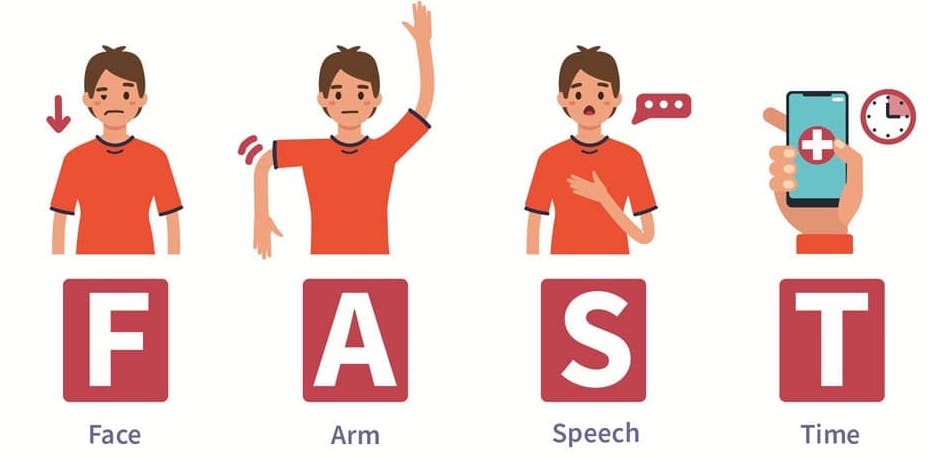Stroke is the first among the diseases causing disability, and second among the ones resulting with death. Stroke is an urgent medical situation when an early intervention is quite important.
The risk of having stroke may be decreased by knowing the risk factors and taking the necessary precautions. The stroke risk factors are divided into two categories as changeable and unchangeable. While sex, age, race, family history, genetic and low birth weight are among unchangeable factors; situations like hypertension, diabetes, hyperlipidemia, atrial fibrillation, smoking and obesity are among the changeable risk factors. Frequency of stroke tends to increase also in younger persons because of the factors like irregular work life and rare rest, increasing pressure and anxiety feelings, and unhealthy diet.
What are the Symptoms of Stroke (Paralysis)?

- Face= Is one part of the face sliding or numb? Ask the person to smile, it is a symptom of stroke if their smile is irregular, or they are unable to do it.
- Arms=Ask the person to lift their both arms. Does one arm slide downwards? Weakness and loss of sensation in arm is a symptom of stroke.
- Speech= Is the speech blurred? A sudden change in speech and speaking unintelligibly are symptoms of a stroke.
- Time= If the person you know reveals these symptoms, call 112 immediately.

First Intervention in Stroke
Early intervention and first aid prevent more brain tissues from getting damaged; and affect the neurological and functional situation after stroke. Time has a vital importance to heal the damage in the brain cells.
- If the person reveals the symptoms of stroke (paralysis), call 911 immediately. Be calm and cool as much as possible.
- Be sure that the environment is safe and there is no close danger like moving vehicles around.
- Control the consciousness. Try to talk with the person, ask questions like their name etc. If they are unable to speak, ask them to squeeze your hand as a response to the questions. If the person cannot respond, they are experiencing loss of consciousness.
- Set the person up to a safe and comfortable position slowly. They should lie down on their side with the support of a pillow of clothes while their head and shoulders are slightly up. When this is ensured, try not to move them.
- If there are tight or narrow clothes, loosen them
- Control the openness of air ways.
- Make the person comfortable. Tell them the aid is on the way.
- Do not give food or drinks.
- Note the symptoms and check whether any changes occur in their situation.
- It is vital to give as much as possible information to the emergency personnel about the situation. Try to remember the time when the symptoms started. Because it is hard to estimate time under stress, check the time.

